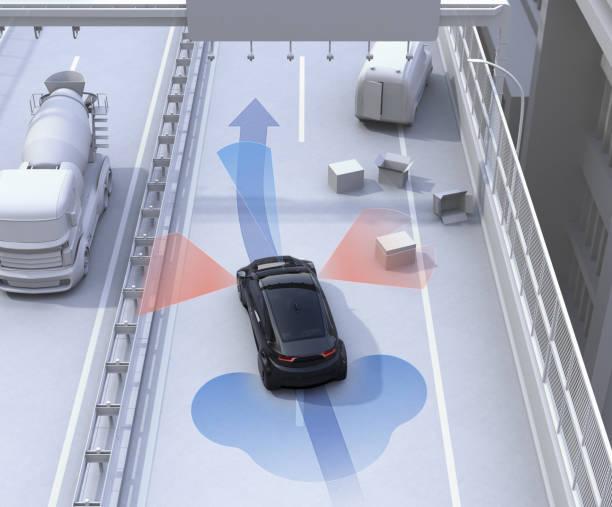The Role of Air Ventilation Unit in Energy Efficiency
In a world increasingly focused on sustainability and energy conservation, it’s easy to overlook the silent warriors working tirelessly behind the scenes—air ventilation unit. While they may not be the first thing that comes to mind when we think about green technology, these crucial components are pivotal in optimizing our indoor environments while minimizing energy consumption. From reducing utility bills to improving air quality, this blog post will explore how modern ventilation systems transform buildings into eco-friendly sanctuaries. Join us as we dive into the seamless blend of comfort and efficiency that air-ventilation units offer, proving that sometimes, it’s what you can’t see that makes all the difference!
Introduction to air-ventilation units and their importance in energy efficiency and sustainability
Air-ventilation units play a crucial role in today’s world, where energy efficiency and sustainability are at the forefront of our minds. Picture this: a system that enhances your indoor comfort and helps reduce your environmental footprint. Sounds appealing, right? These unsung heroes work tirelessly to ensure that the air we breathe indoors is fresh and healthy while keeping utility bills in check.
Proper ventilation becomes paramount as buildings become more airtight for energy conservation. The good news? Air-ventilation units offer an effective solution by balancing airflow and maintaining optimal indoor air quality. Let’s explore how these innovative systems contribute to a greener future while enhancing our everyday lives.
How air-ventilation units work and their impact on indoor air quality
Air-ventilation units play a crucial role in maintaining indoor air quality. They draw in fresh outdoor air while exhausting stale, contaminated air from the interior. This exchange helps dilute pollutants and reduce humidity levels.
These systems often use filters to trap dust, pollen, and allergens. Keeping these irritants at bay creates a healthier environment for occupants.
Moreover, many modern units feature heat recovery ventilators (HRVs) or energy recovery ventilators (ERVs). These technologies transfer heat between incoming and outgoing air streams. This process reduces energy loss while still ensuring optimal airflow.
The result is cleaner air that promotes better health and well-being. Improved indoor air quality can increase productivity and comfort in homes and workplaces. Investing in an efficient ventilation system truly transforms the space you inhabit.
The correlation between air-ventilation units, energy consumption, and utility costs
Air-ventilation units are crucial in managing energy consumption within homes and businesses. Proper ventilation ensures indoor air is refreshed without wasting energy on heating or cooling.
When these units operate efficiently, they help maintain a comfortable atmosphere while reducing the load on HVAC systems. This leads to lower utility costs over time.
Conversely, outdated or poorly designed ventilation can lead to higher energy use. Inadequate airflow forces heating and cooling systems to work harder, resulting in increased electricity bills.
Investing in high-efficiency air-ventilation units can significantly impact your overall energy expenditure. Enhanced designs often feature smart technology that optimizes performance based on real-time conditions, further driving down energy consumption costs.
Understanding this correlation empowers homeowners and business owners to make informed decisions about their ventilation choices for better sustainability and financial savings.
Benefits of using a high-efficiency air ventilation system
High-efficiency air ventilation system is a game changer in modern spaces. They enhance air quality and significantly reduce energy consumption. By optimizing the airflow, these units ensure that fresh air circulates effectively while minimizing waste.
One standout benefit is cost savings on utility bills. With better efficiency, homeowners and businesses alike can see a noticeable drop in monthly expenses. This financial relief often offsets the initial investment. Moreover, these advanced systems contribute to a healthier indoor environment. Improved ventilation helps eliminate pollutants and allergens, resulting in better overall well-being for occupants.
Additionally, high-efficiency models operate more quietly than traditional ones. This means you can enjoy your space without disruptive background noise. Lastly, many of these units come equipped with innovative technology features, allowing users to monitor performance and adjust settings seamlessly through mobile apps or home automation systems.
Innovations and advancements in air-ventilation technology for increased sustainability
Recent innovations in air ventilation technology have transformed how we approach energy efficiency. Innovative ventilation systems now have sensors that adjust airflow based on occupancy and indoor air quality levels. This ensures a balanced environment while conserving energy.
Another exciting advancement is the integration of heat recovery ventilators (HRVs). They extract warmth from stale indoor air and transfer it to incoming fresh air, reducing reliance on heating systems during colder months.
Moreover, many modern units utilize eco-friendly materials and low-energy components. These enhancements minimise environmental impact and offer long-term savings on utility bills.
Energy-efficient designs often feature advanced filtration systems that improve indoor air quality while using less power. As these technologies evolve, they pave the way for sustainable living spaces prioritising comfort and ecological responsibility.
Tips for Choosing the Right Balanced Ventilation System for Your Home or Business
When it comes to choosing the right balanced ventilation system for your home or business, there are a few key factors that you should consider. This will ensure you make an informed decision and select a system that meets your needs and requirements. This section will discuss some essential tips for choosing the right balanced ventilation system.
1.Understand your space
The first step in choosing the right balanced ventilation system is understanding your space. Consider the size of your home or business, the number of rooms, and their layout. It is also essential to consider areas where air circulation may be problematic, such as bathrooms or kitchens.
2. Determine your ventilation needs
Once you clearly understand your space, it is crucial to determine your ventilation needs. This includes considering factors such as the climate you live in, the building materials used in construction, and any existing air quality issues.
3. Research different types of systems
Various balanced ventilation systems are available on the market, each with its own set of features and benefits. It is essential to research these options thoroughly before making a decision.
4. Consider energy efficiency
Energy efficiency should be a top consideration when selecting a balanced ventilation system for your home or business. Look for systems with high energy efficiency ratings to help reduce utility costs while minimizing environmental impact.
Maintenance and proper use of air-ventilation units for optimal energy efficiency
Regular maintenance is essential for keeping air-ventilation units operating efficiently. Dust and debris can accumulate in filters, ducts, and fans. This buildup reduces airflow and increases energy consumption.
Changing or cleaning filters every few months significantly enhances performance. A clean filter improves indoor air quality while reducing the workload on your unit.
Proper use also plays a vital role in efficiency. Set your thermostat to an optimal temperature instead of constantly adjusting it. This habit helps maintain steady airflow without unnecessary energy spikes.
Additionally, scheduling professional inspections once a year can catch potential issues early. Technicians can identify worn components before they lead to costly repairs or replacements. Finally, consider sealing any leaks in the ductwork to prevent conditioned air from escaping. This simple step ensures your system works smarter, not harder, saving energy and money.
Case studies and real-world examples of the positive impact of air-ventilation units
Several organizations have reported significant improvements in energy efficiency after installing advanced air-ventilation units. For instance, a commercial office building in New York City upgraded its system and saw a 30% reduction in energy costs within the first year.
Another case involved a school district implementing high-efficiency ventilation systems across multiple campuses. These systems enhanced indoor air quality and reduced the district’s carbon footprint by nearly 25%. This shift has proven beneficial for student health and operational budgets.
In residential settings, homeowners who replaced outdated units with modern solutions experienced better temperature regulation. One family reported savings of over $500 annually on utility bills while enjoying fresher air circulation throughout their home.
These examples highlight how strategic investments in air ventilation technology can lead to meaningful environmental benefits and cost savings across various sectors.
Conclusion
Air ventilation units are crucial in promoting energy efficiency and sustainability in buildings. They improve indoor air quality and reduce energy consumption by efficiently circulating fresh air and regulating temperature. Building owners can significantly decrease their carbon footprint and save on energy costs by implementing proper maintenance and upgrades of ventilation systems. Advanced technologies such as heat recovery ventilators and smart sensors can further enhance the effectiveness of these units.
FAQs:
1. Can I switch off my air ventilation unit to save energy?
Switching off your air ventilation unit may lead to poor indoor air quality due to a lack of fresh air circulation. Instead, consider upgrading your system or adjusting its settings to optimize energy usage while maintaining adequate ventilation.
2. How often should I replace my filters?
It is recommended that filters be replaced every three months or more frequently if necessary. Clogged or dirty filters can impact the effectiveness of your ventilation system and increase energy consumption.
3. What are some ways to improve the efficiency of my current ventilation unit?
Regular maintenance, cleaning or replacing filters, using advanced technologies like smart sensors, and ensuring proper installation are some ways to improve the efficiency of your current ventilation unit.
| Related Business Listings |
| Contact Directory |
| Local Business Profiles |






